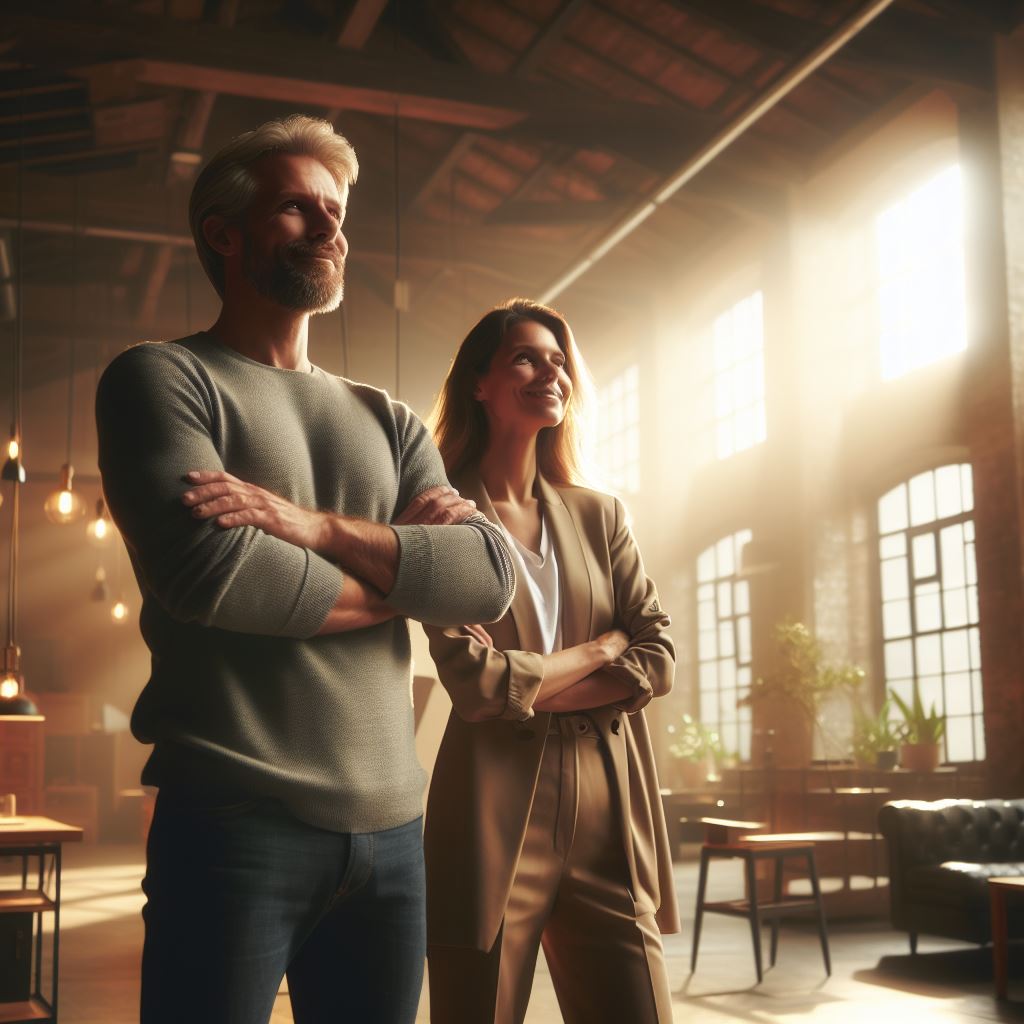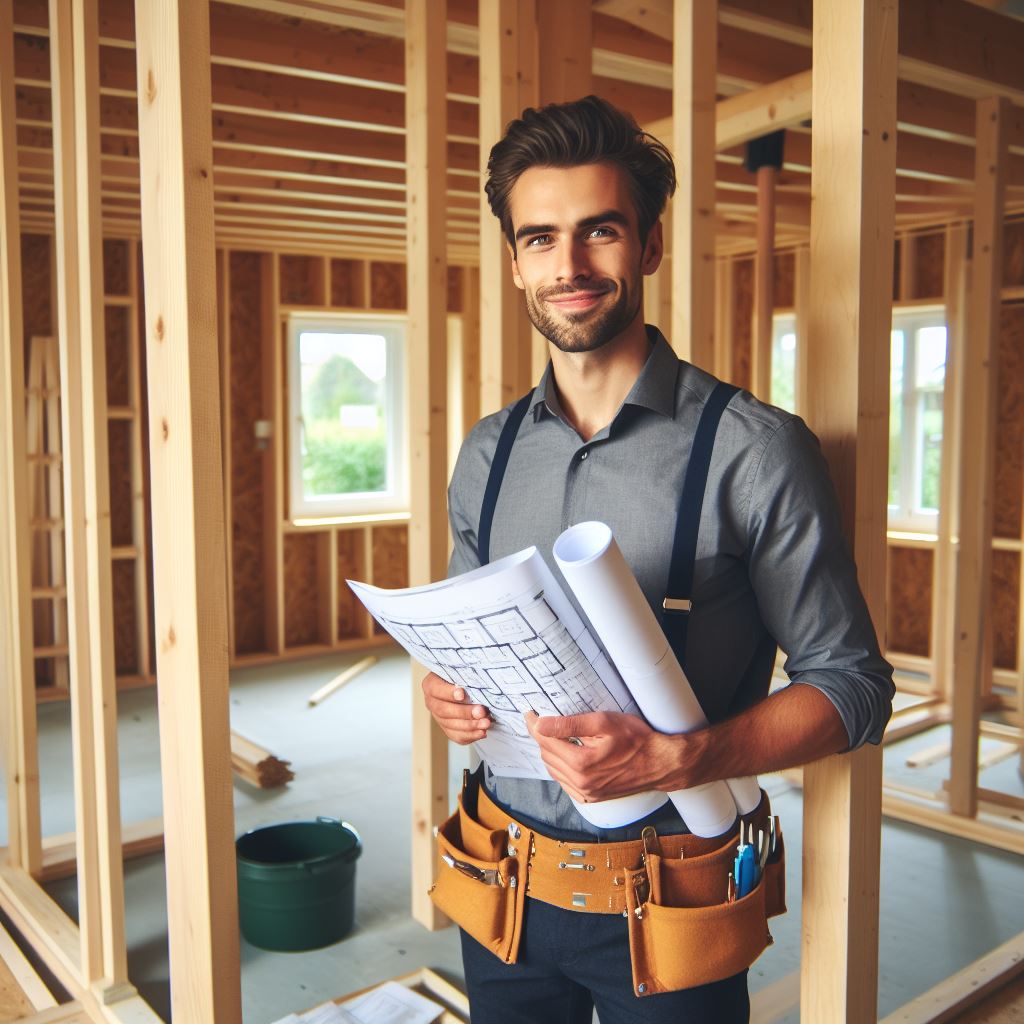Introduction
In this blog post, we will explore Loft Evolution Industrial to Inviting.
A loft is a large, open space that was previously used for industrial purposes.
Over time, these spaces have undergone a remarkable transformation, turning into inviting living spaces.
This post will explore the evolution of lofts and the factors that have contributed to their change.
The transformation of lofts from industrial spaces to inviting living spaces has been influenced by various factors such as architectural design, interior decoration, and changing lifestyle preferences.
Over the past few decades, lofts have experienced a significant shift in their purpose and design.
These formerly cold and empty spaces have now become warm and cozy, attracting a new set of inhabitants.
The architectural design of lofts plays a crucial role in their transformation.
The incorporation of large windows and open floor plans allows for ample natural light, creating a welcoming atmosphere.
Furthermore, the use of quality materials and the preservation of unique industrial features add character to these spaces.
Interior decoration has also played a vital role in making lofts more inviting.
The choice of furniture, color palette, and accessories can drastically change the ambiance of a loft.
Many loft owners opt for a blend of modern and vintage pieces to create a visually appealing and comfortable living space.
Lastly, changing lifestyle preferences have contributed to the evolution of lofts.
More and more people are embracing the idea of open living spaces that promote social interaction and flexibility.
Lofts provide the perfect backdrop for hosting gatherings and events, making them an ideal choice for those seeking an inviting living space.
In essence, the transformation of lofts from industrial spaces to inviting living spaces is a result of the interplay between architectural design, interior decoration, and changing lifestyle preferences.
This evolution has turned lofts into sought-after homes that offer a unique and welcoming environment.
The Evolution of Industrial Loft Design
Origins of lofts in industrial buildings
Industrial lofts first emerged in the 1950s, as artists sought affordable spaces for live/work arrangements.
Former warehouses, factories, and even old schools were converted into spacious lofts.
These spaces provided artists with ample room for their creative endeavors.
Loft living became a symbol of artistic freedom and expression.
Characteristics of early industrial lofts
- Early industrial lofts were characterized by large open floor plans.
- High ceilings, wide windows, and exposed brick walls were commonly found.
- Minimalistic furnishings and a focus on functionality prevailed.
- Industrial materials such as concrete, steel, and reclaimed wood were used extensively.
Use of raw materials and exposed structural elements
- Raw materials like exposed pipes, ductwork, and beams added to the loft’s rugged charm.
- Bare concrete floors and unpainted walls showcased the building’s industrial history.
- Large windows allowed natural light to flood the space, creating a visually appealing effect.
- Metal staircases and catwalks added a sense of industrial functionality to the design.
Influence of the loft aesthetic on contemporary design trends
- The industrial loft design has significantly influenced contemporary interior design.
- Elements such as open floor plans and exposed structural elements have become popular.
- Raw materials and neutral color palettes are often used to achieve an industrial aesthetic.
- Furniture with clean lines and a mix of vintage and modern pieces are frequently seen.
In fact, the evolution of industrial loft design showcases the transformation from an industrial and utilitarian space to a warm and inviting living environment.
The origins of lofts in industrial buildings paved the way for artists to establish their creative sanctuaries.
The characteristics of early industrial lofts, such as open floor plans and raw materials, set the foundation for the loft aesthetic that we see today.
The use of exposed structural elements and raw materials adds a unique touch of rugged charm to contemporary design.
The influence of industrial lofts on current trends is evident in the popularity of open floor plans, neutral color palettes, and the juxtaposition of vintage and modern elements.
Industrial loft design continues to evolve, demonstrating its enduring appeal and timeless aesthetic.
Read: From Shabby to Chic: A Cottage’s Tale
Factors Driving the Transition
Shift in urban dynamics and housing demands
Growing population and limited space in urban areas have led to a shift in housing preferences.
People are now looking for unique and unconventional living spaces that stand out from traditional apartments.
The desire for a sense of individuality and personal expression is driving the demand for loft conversions.
Loft living offers open layouts, high ceilings, and industrial aesthetics that appeal to modern urban dwellers.
Desire for unique living spaces
The desire for a one-of-a-kind home drives individuals to seek out loft conversions.
Loft living provides the opportunity to showcase personal style and creativity through interior design.
By repurposing and transforming industrial spaces, lofts offer a distinctive and personalized living experience.
Loft owners can express their individuality through custom furniture, artwork, and unique layouts.
Influence of creative industries and artists in reclaiming industrial buildings
Artists and creative industries have played a significant role in reclaiming old industrial buildings and turning them into livable lofts.
The need for affordable studio spaces led artists to repurpose abandoned warehouses into creative havens.
Their influence and success in these spaces inspired others to consider industrial buildings as viable living options.
The artistic community’s presence in these areas further promoted the cultural appeal and desirability of loft living.
Sustainability and adaptive reuse as driving factors
With an increasing emphasis on sustainability, adaptive reuse of existing structures has gained popularity.
Loft conversions contribute to sustainable living by repurposing and revitalizing old industrial spaces.
By preserving historical buildings, loft conversions help maintain the architectural heritage of urban areas.
The use of energy-efficient materials and practices in loft renovations reduces the environmental impact of housing.
In short, several factors drive the transition from industrial to inviting lofts.
The shift in urban dynamics and housing demands, along with the desire for unique living spaces, play a significant role.
The influence of creative industries and artists in reclaiming industrial buildings has also contributed to the popularity of loft conversions.
Additionally, sustainability and the adaptive reuse of existing structures have become driving factors in choosing loft living.
These factors combined create a compelling case for the evolution of lofts from industrial spaces to inviting homes.
Read: Eco-Friendly Building: Permits and Codes
Industrial Loft Transformation
A loft’s evolution from industrial to inviting involves several key elements:
Removal or Repurposing of Industrial Equipment and Features
- Demolishing machinery and equipment no longer needed, creating more space within the loft.
- Repurposing old industrial features, such as steel beams and pipes, into design elements.
- Removing industrial flooring and replacing it with more comfortable and aesthetically pleasing materials.
- Stripping away years of grime and dirt to reveal the true potential of the loft’s architecture.
Introduction of Residential Amenities and Finishes
- Adding a modern kitchen with high-end appliances, replacing the industrial-style workstations.
- Installing luxurious bathrooms with spa-like features, departing from the previous utilitarian setups.
- Incorporating stylish and comfortable furniture to create a cozy living and sleeping areas.
- Introducing artwork and decorative elements that reflect the homeowner’s personal taste and style.
Spatial Reconfiguration to Enhance Comfort and Functionality
- Breaking down walls and creating an open concept layout that maximizes available space.
- Adding partition walls or sliding doors to offer privacy in certain areas when needed.
- Creating designated spaces for work, relaxation, and entertainment for a more functional living environment.
- Optimizing storage solutions, such as built-in closets and cabinets, to reduce clutter and increase organization.
Integration of Natural Light and Open Concept Design
- Installing large windows or skylights to flood the loft with natural light, reducing reliance on artificial lighting.
- Using light colors for walls, ceilings, and floors to create an airy and bright atmosphere.
- Utilizing transparent or translucent materials for room dividers to maintain an open feel.
- Arranging furniture and decorations in a way that maximizes natural light and promotes a sense of spaciousness.
Through removing or repurposing industrial equipment, introducing residential amenities, reconfiguring the space, and integrating natural light, an industrial loft can be transformed into an inviting and comfortable living space.
Read: Living Room Revival: Stylish Renovation Tales

Key Design Elements in Inviting Lofts
Warm and natural color schemes
- Choose warm and earthy tones like beige, taupe, and brown to create a cozy and inviting atmosphere.
- Integrate natural elements such as wood and stone to bring a sense of warmth and organic beauty.
- Avoid bright and bold colors that may disrupt the calmness of the space.
Balance between industrial and cozy elements
- Combine industrial elements, such as exposed brick walls and metal accents, with comfortable and cozy furnishings.
- Use furniture pieces that have clean lines and minimalistic designs to maintain the loft’s contemporary feel.
- Avoid overcrowding the space with too many decorative items to ensure a harmonious balance.
Use of soft furnishings and textiles for comfort
- Incorporate plush sofas, cushions, and rugs to create a welcoming and comfortable seating area.
- Choose soft and luxurious fabrics like velvet, faux fur, and cashmere to add a touch of elegance.
- Add curtains or blinds to control the amount of natural light and create a cozy ambiance when desired.
Incorporation of personal style and artwork
- Showcase personal style through unique artwork, photographs, and personal collections.
- Hang paintings or prints that resonate with your personality to make the loft feel more personal.
- Create gallery walls or display sculptures to add visual interest and create conversation starters.
Read: Commercial vs. Residential Permits Explained
Challenges and Considerations
A loft renovation presents several challenges and considerations that need to be carefully addressed in order to create a comfortable and functional living space.
Noise and insulation concerns
One of the main issues when converting an old industrial loft into a cozy living area is dealing with noise and insulation problems.
The raw, open layout of industrial buildings often lacks proper sound barriers and insulation, allowing external noise to penetrate the space.
Addressing this challenge requires implementing effective insulation techniques, including adding soundproofing materials to walls, ceilings, and windows.
Insulation not only helps in minimizing noise but also improves energy efficiency.
Maintenance and upkeep of older industrial buildings
Another consideration when renovating a loft is the maintenance and upkeep required for older industrial buildings.
These structures often have aging infrastructures and may require significant repairs and updates.
It is crucial to thoroughly inspect the building’s systems, including plumbing, electrical, and HVAC, to identify any potential issues.
Hiring professionals, such as architects and contractors, experienced in working with older buildings can help ensure that the necessary upgrades are made to meet modern living standards.
Balancing the preservation of historic features with modern living needs
Preservation of the historic features and character of an industrial loft adds a unique charm and beauty to the space.
However, finding a balance between preserving these elements and meeting modern living needs can be a challenge.
When renovating, it is important to carefully assess which original features should be retained and restored and which can be modified or replaced.
This requires a careful evaluation of both aesthetic and functional aspects, ensuring that the final design harmoniously blends historical and contemporary elements.
Financial implications of loft renovations
Loft renovations can come with significant financial implications, which need to be carefully considered.
The costs involved in transforming an industrial space into an inviting loft can vary based on factors such as location, size, and desired features.
Creating a realistic budget and working closely with professionals can help manage expenses and prioritize essential renovations.
It is important to allocate funds for both necessary structural improvements and design elements that will enhance the overall aesthetics and functionality of the space.
In a nutshell, converting an industrial loft into an inviting living space requires addressing various challenges and considerations.
From soundproofing and insulation to maintenance and financial planning, each aspect plays a vital role in the successful renovation of a loft.
By carefully evaluating and addressing these challenges, it is possible to create a stylish and comfortable loft that seamlessly merges historic industrial features with modern living needs.
Conclusion
Recap of the evolution of industrial lofts to inviting living spaces
Industrial lofts have undergone a remarkable transformation over the years.
What was once a cold and stark space has now become a warm and inviting living area.
This evolution can be attributed to the creative use of materials, innovative design strategies, and a focus on creating functional and aesthetic spaces.
Importance of preserving and enhancing historic industrial architecture
Preserving and enhancing historic industrial architecture is crucial in maintaining the character and identity of a city.
These architectural gems serve as a reminder of our industrial heritage and offer a unique visual appeal.
By repurposing these buildings into inviting living spaces, we not only breathe new life into them but also maintain a connection to our past.
Future possibilities and trends in loft design
The future of loft design holds endless possibilities. With advancements in technology and evolving lifestyles, lofts can further embrace functionality, sustainability, and flexibility.
Open floor plans, natural light, and integration of outdoor spaces are likely to remain popular trends.
Additionally, the integration of smart home technology and energy-efficient features are expected to define the future of loft design.
The evolution of industrial lofts to inviting living spaces highlights the importance of preserving historic industrial architecture while embracing modern design trends.
By combining the old and the new, we can create unique and desirable living environments for the future.




